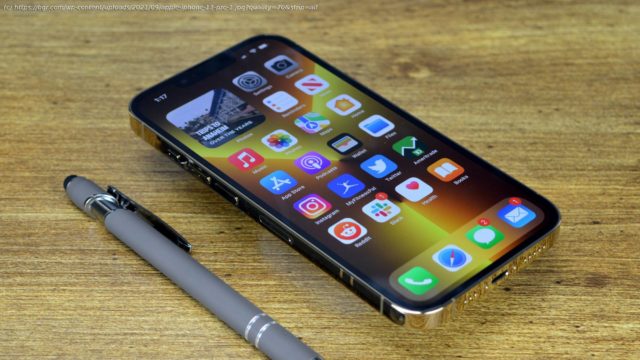The iPhone 13 Pro may look similar to last year, but in reality, it has gotten a number of upgrades. Here’s our full iPhone 13 Pro review.
The list of features missing from the iPhone is shrinking. Android stans can easily point to features and specs that could help improve the iPhone. But with the iPhone 13 Pro and Pro Max, one of the biggest of those missing features is no longer missing — a high refresh rate display. But while ProMotion may be one of the headline new features, Apple has actually refined on the Pro iPhone in a number of other meaningful ways. There’s a better camera. There’s a better battery. And, there’s a smaller notch. Yay. There’s a serious case to be made for the idea that this is a bigger update to the series than the iPhone 12 Pro was. Sure, the iPhone 12 series brought a flashy new design. But in day-to-day use, little was different compared to the iPhone 11 series. That changes for the iPhone 13 Pro. At first glance, the iPhone 13 Pro’s design is very similar to the iPhone 12 Pro. It’s got the same flat edges, is the same overall size and still has the glossy frame and matte glass on the back. None of that is a bad thing though. The iPhone 12 Pro looks great, and I’m glad that the flat-edged look has stuck around this year. I expect it’ll stay for a few more years. Of course, there are a few design changes for the iPhone 13 Pro. Perhaps the most prominent of those is the larger camera module. It’s really quite huge. The module both takes up a larger footprint on the back of the phone and extends further from the back. It’s worth it — the camera quality is much better — but it definitely takes some getting used to. Your old case won’t work with the iPhone 13 Pro. The iPhone 13 Pro still has a Lightning port, and it’s getting a little tired. I would love for Apple to switch to USB-C, at least on the Pro iPhone models. It would make charging easier in a multi-device world, and would open up more possibilities for accessories. One of the most hyped design changes is the smaller notch. While it’s nice that the notch is smaller, frankly, you’ll barely notice. In day-to-day use, the display doesn’t really feel much more immersive. Other minor design tweaks include the fact that the device is slightly thicker, and the buttons on the left and right edges are a little lower. And, the phone is available in a few new colors. We’re reviewing the Gold model, and while the glossy gold frame feels a little gaudy at times, it still looks great. While the iPhone 13’s display was only a minor upgrade over the iPhone 12’s, the Pro phones are getting a much bigger upgrade. Finally, after years of asking, the iPhone 13 Pro has a high refresh rate display. Not only that, but the display panel is one of Samsung’s high-end LTPO displays, which basically means that it can change its refresh rate depending on what’s happening on the screen, saving on battery where possible, and boosting refresh rate when necessary. Refresh rates scale between 10Hz and 120Hz. The display itself is a 6.1-inch OLED display with an 1170 x 2532 resolution, and 1200-nit peak brightness. It looks spectacular. The screen is bright, with vibrant colors, and deep black levels. And, thanks to ProMotion, it’s incredibly responsive. Animations are smooth and lifelike, and the phone in general just feels more…natural. Most of the time, anyway. While most standard animations and scrolling motions will automatically take advantage of the 120Hz refresh rate, some third-party developers will need to enable the higher refresh rate for custom rendering. That includes games — so if you were looking forward to using ProMotion for mobile games, you may need to wait a little. Honestly, I don’t see this as a huge issue. Sure, I don’t game a ton on my phone, but I do occasionally. To me, animations and scrolling are where high refresh rates really matter, helping make the phone feel more touch-responsive.






